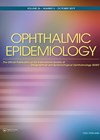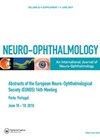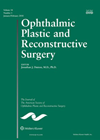Sutureless, scleral fixated-IOLs
This was a retrospective cohort study of 112 sutureless, scleral-fixated posterior chamber intraocular lens implantations (SSFCIOL) over a four-year time period. Mean follow-up duration was 13.0 ±10.4 months. The primary indication for SSFCIOL was dislocation of IOL due to zonular...
Corneal crosslinking in pellucid marginal degeneration
Fourteen studies were included in this first review examining the use of corneal-crosslinking (CXL) to treat pellucid marginal degeneration (PMD). PMD is a bilateral, non-inflammatory corneal thinning disorder characterised by inferior peripheral corneal thinning 1-3mm from the limbus in the...
Glaucoma screening in primary care and community settings
Glaucoma is one of the most common causes of irreversible blindness in the United States due to its insidious progression and diagnosis in late stages. The cost-effectiveness of screening for glaucoma has been debated, and screening of high-risk groups for...
Trab360: surgical management of childhood glaucoma
This multicentre retrospective interventional case series reports the outcomes and complications of trabeculotomy ab interno using the Trab360 device in childhood glaucoma’s. Forty-six eyes of 41 patients were included and had a mean follow-up of 14.5 months. Mean preoperative intraocular...
Long-term treatment of blepharospasm using Botulinum Toxin A
The authors report findings from a retrospective single-centre study which aimed to evaluate the efficacy and safety of long-term botulinum A toxin (BAT) treatment in patients with blepharospasm (BPS). Blepharospasm is described as one of the most frequent types of...
Using video-oculography to record monocular eye movements
The aim of this study was to examine the characteristics of monocular eye movements recorded using video-oculography (VOG). VOG monocular recording has become increasingly popular in comparison to electro-oculographic binocular recording, due to its simple technique. The authors evaluated the...
A case of ipsilateral fourth nerve paresis and Horner’s syndrome
The author presents a single case report of an exceptional association between fourth nerve palsy and ipsilateral Horner’s Syndrome. The case is presented alongside magnetic resonance images (MRI) which reveal a mass in the right cavernous sinus. The 54-year-old woman...
Benefit of selenium and vitamin D supplementation in thyroid eye disease
There is some limited evidence of as association between thyroid eye disease (TED) and nutritional deficiencies including selenium and vitamin D. Prior studies show that selenium can reduce TPO-antibody concentrations and improve hypothyroidism and post-partum thyroiditis. Limited evidence also shows...
Link between compression of anterior visual pathway structures and visual deficit
The compression of anterior visual pathway (AVP) structures can be observed on neuroimaging. It is not clear whether or not this compression results in damage to these structures. The authors present a single centre retrospective case record review over the...
Choroidal vascularity in NAION
The authors present a cross-sectional, non-interventional study of healthy volunteers and those with non-arteritic anterior ischaemic optic neuropathy (NAION) recruited over a six-month period at a single site. NAION is the most common cause of acute optic neuropathy over the...
Vitamin D and thyroid eye disease
This is a retrospective review of vitamin D levels in patients with thyroid eye disease (TED). Vitamin D levels in 89 patients with Grave’s disease and TED were compared against 89 patients with Grave’s disease and no TED. They also...
Ablepharon-macrostomia syndrome
The ablepharon-macrostomia syndrome is a very rare condition caused by a dominant mutation in the TWIST2 gene. Congenital defects include rudimentary eyelids, macrostomia, ambiguous genitalia and campodactyly. Neonates are at risk of severe corneal exposure without intervention. Previous reports have...










